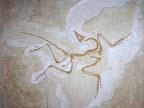 |
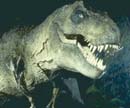 |
 |
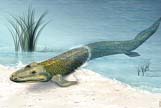 |
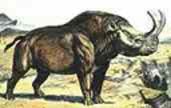 |
Produced
by the Population Genetics and Evolution class, Furman University |
||||
 |
 |
 |
 |
 |
Produced
by the Population Genetics and Evolution class, Furman University |
||||
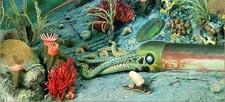 |
The
Ordovician: Eurypterids and Megalograptus |
 |
||
| Commonly known
as sea scorpions, eurypterids are an extinct class of arthropods that
are distantly related to modern day arachnids (Wikipedia 2010a). They
include some of the largest arthropods to have ever lived, with the largest
discovered at 2.5 meters long (Wikipedia 2010b). Eurypterids either crawled
in shallow waters or swam using broad paddle-like structures. Earlier
eurypterids swam in marine environments, while later eurypterids living
lived in brackish and fresh water. Eurypterids were active predators or
scavengers (Lamesdell 2009). Megalograptus, a subgenre of the
eurypterids, were known to eat their own kind as well as giant orthocones
and also other eurypterids (BBC 2010). Megalograptus is historically
important because they were the first animals to ever move from water
to land (BBC 2010). They also molted their exoskeletons to increase their
size. During the molting process, Megalograptus gathered in shallow
waters for protection and for an opportunity to mate (Lamesdell 2009).
The closest livings relative to the eurypterids are horseshoe crabs. Page by Julia Bobo |
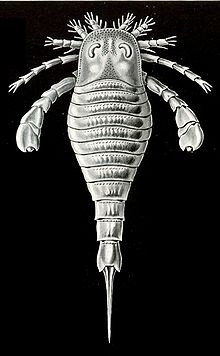 |
| Eurypterid, artist interpretation. From: | |
|
Lamesdell J. 2009. Eurypterids. Accessed Feb 6, 2010. BBC Science and Nature. 2010.Sea Scorpion. Date Accessed: Feb 6, 2010.Wikipedia. 2010a. Eurypterids. Accessed Feb. 6, 2010. Wikipedia. 2010b.
Jaekelopterus rhenaniae. Accessed Feb. 6, 2010 |